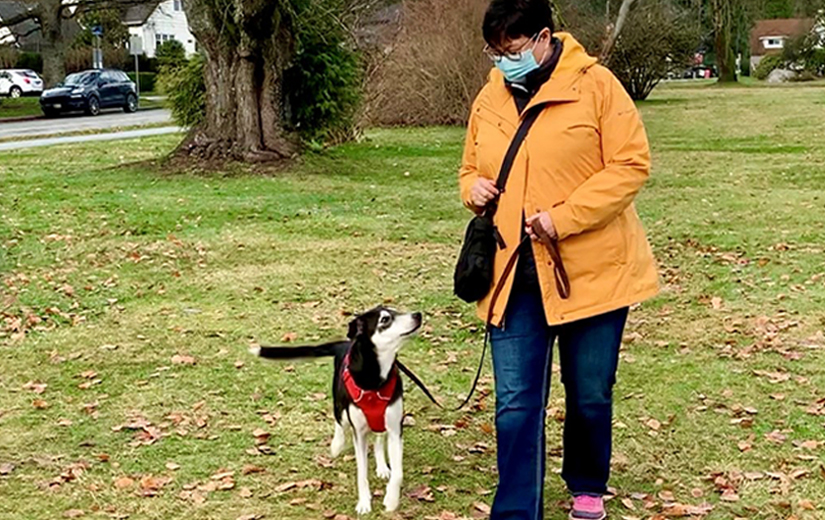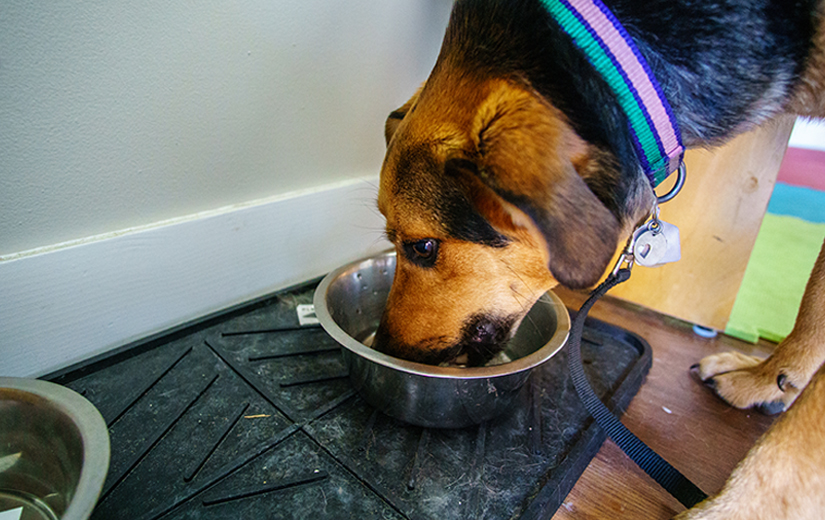Got a dog, now what? – A step-by-step guide for new dog guardians

Bringing a pet into your life is an exciting event! However, it might be a stressful transition for the dog.
Imagine moving into an unknown space, surrounded by people you don’t know, where everything is new to you. It’ll be scary!
AnimalKind accredited trainer and owner of Dog Partners, Valerie Barry, says, “Getting a dog should be as carefully planned as everything else in our lives. Once you’ve made that decision, make a plan. You can’t be too prepared but you can be really, really unprepared.”
Here are eight steps to make the welcoming process smooth for everyone:
- Step one: Have patience
- Step two: Make a plan
- Step three: Let the sniffing begin
- Step four: Establish routines
- Step five: Learn about dog body language
- Step six: Training is caring
- Step seven: Do not skip socialization (especially if your dog is a puppy!)
- Step eight: Keep it fun

Step one: Have patience
Starting life with a dog requires patience. Not everything will turn out the way you imagine.
The idea is to build a relationship of trust between you and your dog. There might be bumps on the road, but with love, care, training, and some patience, you will make the best out of the rewarding experience that is sharing your life with a dog.
Step two: Make a plan
The best way to welcome a dog to your home is to have a clear idea of what it’ll mean for everyone in the family. Think about everyone’s routines, your lifestyle and future plans. Answer questions like:
- Where is the dog going to sleep?
- Will you be using a crate?
- Do you have toys for your dog?
- Who is going to take your dog on bathroom breaks?
- Where are you placing your dog’s food and water at home?
- How will you provide your dog with exercise?
- Where do you find a humane trainer?
- Who is your veterinarian?
- Who will take care of the dog when you are away?
- Is the dog going to join you on future travels?
Making a plan allows you to understand what it is required for you and your dog to be successful as you transition into a new life as a dog family.

Step three: Let the sniffing begin
Dogs have a powerful and sensitive sense of smell. They use it to gather information and get to know the world around them.
When you bring a new dog to your home, walk them on a leash inside the house and let them sniff around and get used to their new environment. It is their way to become familiar with their new space, and their new people.
Step Four: Establish routines
Establishing a routine will make it easy for your dog to adapt to their new environment. It is also beneficial for you and your family.
Plan for bathroom breaks based on the age, size, and needs of your dog. Younger dogs and smaller breeds might need more frequent breaks. Consider your present and future schedule to establish exercise and playtime, crate time, or when your dog will be at home alone.
Step five: Learn about dog body language
Understanding what your dog is saying through the position of their ears, the wagging of their tails, how they are holding their body, etc. is essential for all dog guardians. Body language can help you assess if a situation is stressful or pleasant for your dog or if they are fearful or happy.
Step six: Training is caring
Every dog is different and has different needs. Some dogs are motivated by food, others by toys or play. Some enjoy activities like playing with other dogs, while others enjoy long walks or playing fetch. Vanessa Charbonneau, owner and head trainer of Sit Pretty Pet Services explains, “It’s important to understand that, like people, dogs are individuals. Every dog is slightly different than the next, from their personality, their motivations to their likes and dislikes.”
With the help of a humane dog trainer, you learn how to identify and meet those needs and work together to create a fulfilling experience that strengthens the bond between you and your dog.
Keep in mind training is unregulated in B.C., so take advantage of tools like the AnimalKind list of trainers to find a trainer who has the education, credentials and only uses humane training methods that will not harm your dog.

Step seven: Don’t skip socialization
If your new dog is a puppy and is younger than three months, socialization is crucial.
Socialization happens during the “sensitive period” which starts at three to four weeks and lasts until around 14 weeks and involves exposing your dog to experiences in a way that is positive for them. Socialization activities may also be important for some adult dogs, especially if coming to you from a very different environment.
Socialization means introducing your dog to:
- Situations (riding a car, walking on the beach or grass, seeing traffic on the streets, etc.)
- People (children, people in uniforms, etc.)
- Environments (vet office, groomer, pet store, etc.)
- Other animals (other house pets, dogs on the streets, etc.)
Regardless of your current situation, whether you have kids or other pets, it is important to expose your puppy to as many new people, animals, places and situations as possible, as long as it is safe. Talk to your vet about protective vaccines and avoiding areas with a high chance of spreading infectious diseases (e.g. dog park).
Step eight: Keep it fun!
Starting life with a dog should be exciting, even with all the work and responsibilities that are involved when caring for a pet. Don’t be harsh on yourself, it is, after all, a learning experience for both you and your dog. Barry says, “Don’t forget that even with the best of plans, things can still go sideways. You need to be prepared that despite all your careful planning, you may need to be flexible to the needs of your individual dog and change the plan to suit them.”
Be prepare to be as flexible as possible to make sure the integration into your home happens smoothly, and have fun! Sharing your life with a dog is an unforgettable experience. Enjoy it!